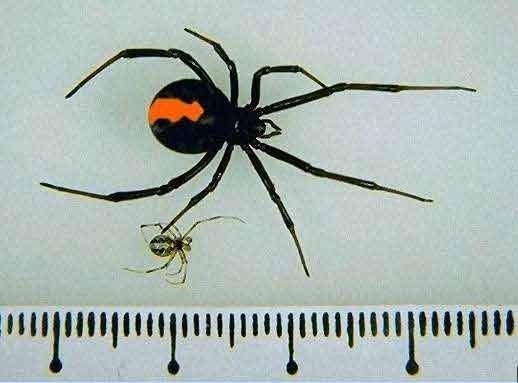

Whilst there are an estimated 2,500 species of spider in New Zealand, confirmed bites are relatively rare occurrences. It is particularly important to capture and take the suspect spider along for identification purposes. Always consult a physician if a spider bite is suspected.
#Redback spider predators skin
Many spiders cannot penetrate human skin with their fangs and the bite of those that can, usually results in no more than a slight swelling and inflammation. Bites usually occur when the males are wandering about searching for females or when people clean out neglected places such as basements, attics, or garages, or put on seldom-used clothing. Spider bites usually result only with great provocation such as squeezing or handling. During the day, they usually remain hidden and inactive in cracks and crevices, their webs, etc. Most spiders are nocturnal or active at night and will scurry away when disturbed unless they are tending egg sacs or young. All spiders are predators, feeding mainly on insects and other small arthropods. Wherever their food is available, spiders are likely to be found. Many species of spiders are household pests. An antivenom has been available since 1956.There are over 35,000 species of spiders world-wide. Generalised symptoms of nausea, vomiting, headache, and agitation may also occur and indicate severe envenomation. Sweating in localised patches of skin occasionally occurs and is highly indicative of latrodectism. Predominantly neurotoxic to vertebrates, the venom gives rise to the syndrome of latrodectism in humans this starts with pain around the bite site, which typically becomes severe and progresses up the bitten limb and persists for over 24 hours.

The redback is one of the few spider species that can be seriously harmful to humans, and its liking for habitats in built structures has led it to being responsible for a large number of serious spider bites in Australia. The redback spider has a widespread distribution in Australia, and inadvertent introductions have led to established colonies in New Zealand, the United Arab Emirates, Japan and greenhouses in Belgium. Each clutch averages 250 eggs and is housed in a round white silken egg sac. The redback is one of a number of arachnids that usually display sexual cannibalism while mating.Īfter mating, sperm is stored in the spermathecae, organs of the female reproductive tract, and can be used up to two years later to fertilise several clutches of eggs. Other species of spider and parasitoid wasps prey on this species. Male spiders and spiderlings often live on the periphery of the female spiders' web and steal leftovers. Sometimes a potentially dangerous victim can be left to struggle for hours until it is exhausted enough to approach safely. Once its prey is restrained, it is bitten repeatedly on the head, body and leg segments and is then hauled back to the redback spider's retreat. The redback spider then trusses the victim with silk. Often, it first squirts its victim with what resembles 'superglue' from its spinnerets, immobilising the prey by sticking the victim's limbs and appendages to its own body. It kills its prey by injecting a complex venom through its two fangs when it bites, before wrapping them in silk and sucking out the liquefied insides. It preys on insects, spiders and small vertebrates that become ensnared in its web. Mainly nocturnal, the female redback lives in an untidy web in a warm sheltered location, commonly near or inside human residences. Latrodectus mactans hasselti Chrysanthus, 1975.Latrodectus cinctus Gerschman & Schiapelli, 1942.

Latrodectus hasselti ancorifer Kulczyński, 1911.Latrodectus hasselti aruensis Strand, 1911.Latrodectus hasselti indicus Pickard-Cambridge, 1902.


 0 kommentar(er)
0 kommentar(er)
